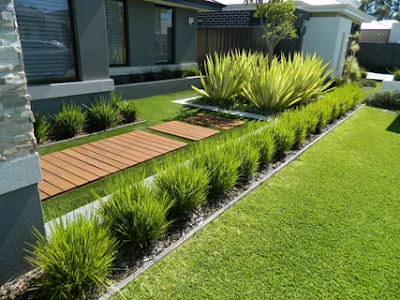Welcome readers to the blog post! Today, we are going to embark on an exciting journey into the world of landscape design. Whether you have a sprawling backyard or a cozy balcony, the way you design your outdoor space can truly transform it into a breathtaking oasis. So, grab a cup of coffee, sit back, and let's dive into the basics of Melbourne Landscape Design together!
-
Understanding Your Outdoor Space:
Before we start dreaming up the perfect design for your outdoor space, it's crucial to understand its unique characteristics. By assessing and evaluating your outdoor space, you can make informed decisions that will maximize its potential. Factors such as size, shape, and existing features play a significant role in shaping your landscape design choices.
Take the time to walk around your space, observe the sunlight patterns, and identify any existing structures or natural elements that you'd like to incorporate into your design. This initial step will provide a solid foundation for your landscape design journey.
-
Defining Your Design Goals:
Now that you have a good grasp of your outdoor space, it's time to define your design goals. Every person has their own preferences and aspirations for their outdoor sanctuary. Consider what you want to achieve with your space.
Is it a peaceful retreat where you can unwind after a long day? Or perhaps you envision a vibrant entertaining area where you can host friends and family. By setting clear goals, you can tailor your design choices to match your vision. Think about functionality, aesthetics, and sustainability as you brainstorm design ideas. Remember, your outdoor space is an extension of your personality, so let it reflect who you are!
-
Choosing the Right Plants:
Plants are the heart and soul of any Melbourne landscape design. Selecting the right plants is crucial for creating a harmonious and thriving outdoor space. Start by considering the purpose of each area in your design. Are you looking for ornamental plants to add color and texture? Or do you need shade-providing trees to create a comfortable seating area? Additionally, take into account the climate and soil conditions in your region.
Not all plants thrive in every environment, so do your research and choose plants that are well-suited to your specific conditions. Lastly, consider the maintenance requirements of each plant. If you prefer a low-maintenance garden, opt for plants that require minimal care. By carefully selecting your plants, you can create a lush and vibrant landscape that will flourish for years to come.
-
Creating Focal Points:
Focal points are key elements that draw the eye and add visual interest to your landscape design. They can be anything from a stunning water feature to a unique sculpture or a majestic specimen tree. Focal points create a sense of balance and harmony in your outdoor space, while also showcasing your personal style.
When choosing focal points, consider your overall design goals. If you want a tranquil space, a trickling fountain or a peaceful pond might be the perfect choice. If you're aiming for a contemporary look, a modern sculpture could be the focal point that steals the show. Be creative and let your imagination run wild as you bring your outdoor space to life.
-
Considering Hardscape Elements:
Hardscape elements, such as pathways, patios, and decks, play a vital role in landscape design. They provide structure and define different areas within your outdoor space. When selecting materials for your hardscape, think about the overall aesthetic you want to achieve. Do you prefer a rustic look with natural stone or a sleek and modern design with concrete?
Additionally, consider how the hardscape elements will blend with the existing architecture of your home. You want a cohesive and seamless transition from indoors to outdoors. By incorporating hardscape elements thoughtfully, you can create a visually stunning and functional space.
-
Enhancing with Lighting:
Lighting is a powerful tool that can elevate the aesthetics and functionality of your landscape design. It not only adds ambiance but also extends the usability of your outdoor space into the evening hours. When planning your lighting design, consider different techniques such as uplighting to highlight trees or architectural features, or pathway lighting to guide guests safely through your garden.
Opt for energy-efficient and weather-resistant lighting options to ensure longevity and sustainability. With the right lighting, you can create a magical atmosphere that will enchant you and your guests.
-
Maintaining Your Landscape Design:
Creating a beautiful landscape is just the beginning; maintaining it is the key to its long-term success. Regular maintenance is essential for a thriving outdoor space. Start by watering your plants according to their specific needs and fertilizing them regularly to promote healthy growth.
Pruning is crucial to maintain the shape and health of your plants, so invest in a good pair of pruners and keep an eye out for any pests or diseases that may affect your garden. Finally, periodically assess your landscape design and make necessary adjustments. As your plants grow and mature, you may need to rearrange or add new elements to maintain the balance and beauty of your outdoor space.
Conclusion:
Congratulations! You've reached the end of our journey through the basics of landscape design. We've covered everything from understanding your outdoor space and defining your design goals to choosing the right plants, creating focal points, considering hardscape elements, enhancing with lighting, and maintaining your Melbourne landscape design. Armed with this newfound knowledge, it's time for you to start exploring your own landscape design ideas with confidence.
Remember to embrace your personal style, be creative, and most importantly, have fun! If you have any questions or would like to share your own experiences, feel free to reach out. Happy designing!







